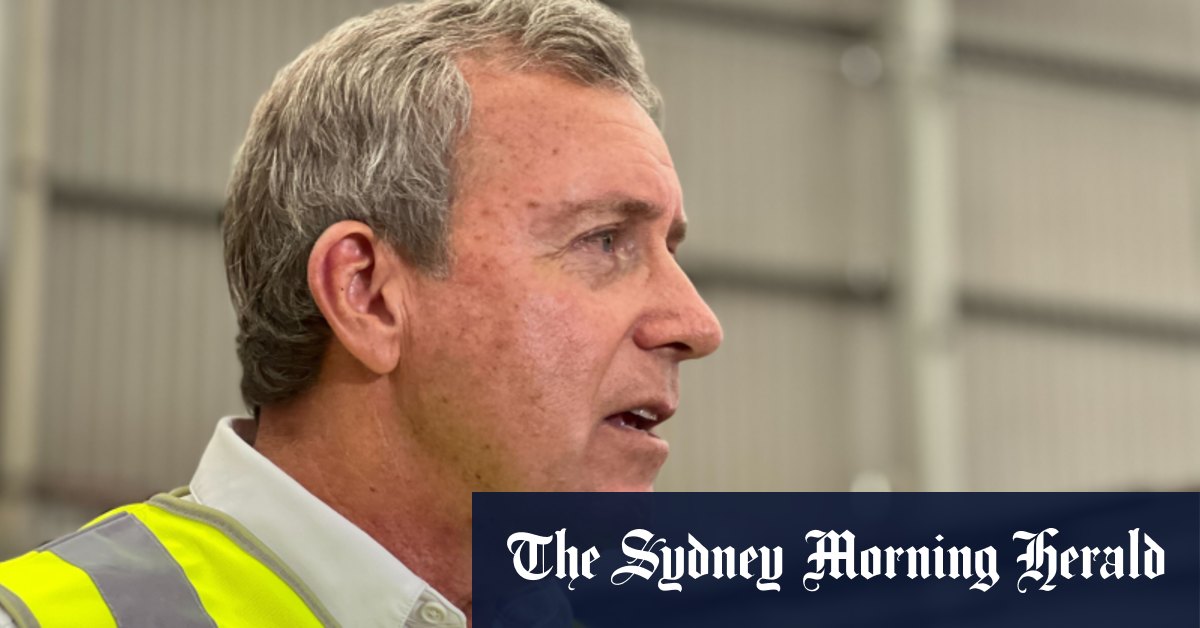Australia
Labor’s $200m energy promise ‘dreadfully’ unfulfilled

The Broken Promise of Power: A Failure to Deliver for Cyclone-Impacted Communities
In the lead-up to the 2021 Western Australian state election, the McGowan government made a bold promise to deliver 1,000 self-sufficient power units to cyclone-impacted residents and farmers. These standalone power systems, valued at $218 million over five years, were intended to provide cleaner energy solutions and a much-needed economic boost for local manufacturers. However, more than two years into the initiative, the state government has fallen woefully short of its target. When pressed for specifics, Energy Minister Reece Whitby revealed that only 296 units had been delivered—far less than the promised 1,000. This stark under-delivery has sparked criticism from both affected communities and the opposition, raising questions about the government’s ability to fulfill its commitments.
The Challenge of Delivering Renewable Energy to Remote Areas
The provision of standalone power systems is no small feat, especially in Western Australia, where remote communities often rely on diesel-powered energy sources. These systems are not only expensive but also environmentally unfriendly, making the transition to solar energy with diesel backup a critical step toward sustainability. According to Energy Minister Reece Whitby, the government is committed to this vision, but the sheer scale of the challenge cannot be understated. “It is a big challenge, we’ve got many remote communities,” Whitby acknowledged. “These are centers that operate on diesel, [they’re] very expensive, very remote communities. What we’re doing is providing solar with a diesel backup, it’s much more resilient.”
While the minister’s words highlight the complexity of the task, they do little to explain why the rollout has been so slow. The government’s failure to meet its own targets has left many wondering if the initiative was overly ambitious or poorly managed from the start. Critics argue that the lack of progress is a clear example of a government that has bitten off more than it can chew.
A Government Under Fire: Defensive Over Lackluster Progress
Despite the government’s efforts to frame the rollout as a complex and challenging endeavor, the numbers speak for themselves. With only 296 units delivered, the state is far from achieving its goal of 1,000. This shortfall has not gone unnoticed, and the opposition has wasted no time in capitalizing on the issue. Opposition leader Shane Love was scathing in his assessment, labeling the government’s efforts as “completely inadequate.”
Love’s comments underscore a deeper frustration among those affected by the rollout’s delays. “The planning and rollout for this promise has been dreadful,” Love said. “It’s just another example of a government that can’t deliver on its promises. You can’t make them just because it’s election time and then not follow through.” His words resonate with many in the community, particularly those who were promised these systems in the aftermath of Cyclone Seroja, a devastating storm that highlighted the fragility of Western Australia’s energy infrastructure.
Cyclone Seroja and the Human Cost of Delayed Action
The impact of Cyclone Seroja in 2021 served as a stark reminder of the vulnerability of Western Australia’s communities, particularly in rural and remote areas. The storm caused widespread destruction, leaving many without power and reliant on temporary solutions. It was in this context that the McGowan government’s promise of standalone power systems took on added significance. These systems were not just a commitment to renewable energy but a lifeline for communities that had faced the brunt of the cyclone’s fury.
Yet, nearly two years later, many of these communities are still waiting. The delay in delivering the promised power units has compounded the challenges faced by those impacted by Cyclone Seroja. Farmers and residents who were hoping for a reliable and sustainable energy solution have been left in limbo, forced to continue relying on costly and inefficient diesel-powered systems. This delay has not only hindered their recovery but also undermined their trust in the government’s ability to deliver on its promises.
The Bigger Picture: Renewable Energy and Governance in Western Australia
The failure to deliver on the standalone power systems is more than just a missed target; it reflects broader challenges in Western Australia’s transition to renewable energy. The state’s vast and remote landscapes present unique obstacles, but they also offer immense opportunities for innovation and investment in clean energy. By failing to meet its own targets, the government risks sending a negative signal to investors and manufacturers who might otherwise be eager to support the state’s renewable energy efforts.
At the same time, the issue highlights a growing disconnect between political promises and governance reality. Election pledges are often made with the best of intentions, but their fulfillment requires careful planning, coordination, and execution. In this case, the McGowan government’s inability to deliver on its promise has eroded public trust and raised questions about its priorities. As Western Australia continues to grapple with the challenges of climate change and energy sustainability, the need for effective leadership and accountable governance has never been more pressing.
In conclusion, the state government’s failure to deliver on its promise of 1,000 standalone power systems is a disappointing reminder of the gap between ambition and execution. While the challenges of remote energy delivery are undeniable, the lack of progress is a missed opportunity to build resilience and support renewable energy in vulnerable communities. As the government moves forward, it must do better to restore trust and demonstrate a genuine commitment to its election promises.











